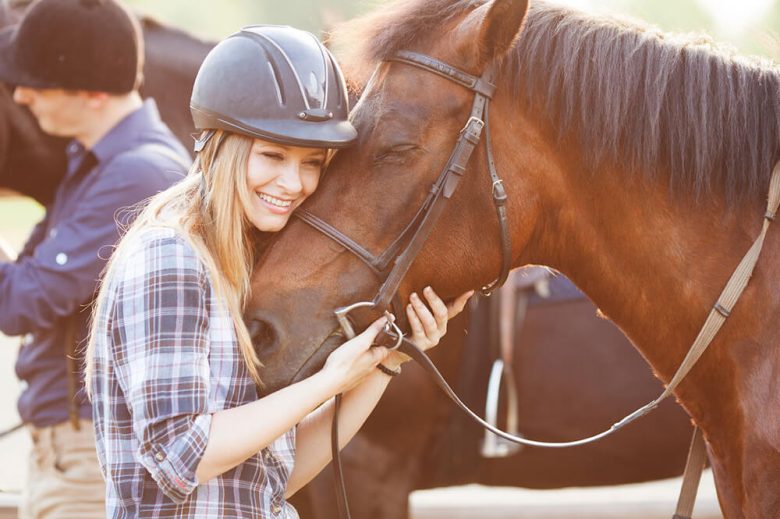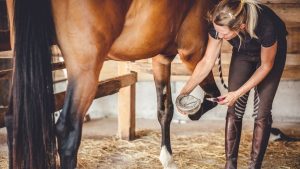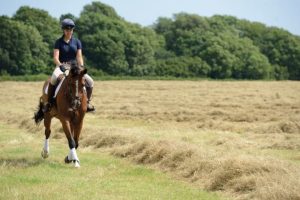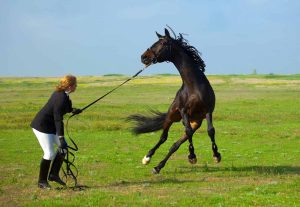You can’t just ride your horse to build a strong bond with him; you must trust, understand and feel connected to your horse. Horses are highly intelligent animals, and getting close to them is more than just learning tricks. Here are three simple things you can do to strengthen your friendship with your horse:
Spend Quality Time Together:
Spending quality time with your horse when you’re not training or riding is one of the most important things you can do to bond with your horse. Like any other connection, spending time together makes it easier to trust and understand each other. Make time every day to spend time with your horse, whether that means grooming, grazing with your hands or simply sitting in the pasture with him.
- Groom Your Horse: Grooming your horses is not only good for their health and well-being, but it is also a fun way to spend time together. When you clean your horse, use this time to have physical contact with him. Watch how they react to your body and massage and care for them slowly. The bond between you and your horse becomes stronger, which also keeps your skin and coat healthy.
- Hand Grazing: Hand grazing is another great way to get to know your horse better. Find a safe, lush place for your horse to graze and sit nearby while he nibbles. This action resembles the natural behaviour of horses in the wild, where they will graze like a herd of cattle. Doing this with your horse allows him to relax and connect your presence with good things.
- Spend Time in the Pasture: Spending time with your horse in the pasture also helps you bond with him better. Pay attention to how they behave, talk to them and enjoy each other’s company in a quiet place. Whether you’re reading a book or having a quiet conversation while your horse grazes nearby, these shared moments are great for building trust and respect.
How to Communicate Well:
To develop a strong bond with your horse, you need to be able to speak to him clearly. Horses can sense your energy level, body language and tone of voice, so it’s important to be clear and consistent when you talk to them.
- Understand Your Horse’s Body Language: To communicate effectively with your horse, you must learn to read his body language. Learn to recognise signs of calm, agitation, pain and stress, and then change your behaviour to adapt. When you talk to your horse, pay attention to his reactions and consider his signals. By respecting their boundaries and responding appropriately, you can build trust and a stronger relationship with them over time.
- Understanding Verbal Signals and Commands: In addition to body language, verbal signals and commands are also of great importance for communication. To get your horse to do what you want, use clear, regular verbal signals and support him with physical signals such as leg pressure or reins. It’s important to be consistent when talking to your horse, so use the same signals each time to keep things clear.
- Maintain Positive Energy and Emotions: Additionally, maintaining positive energy and emotions while interacting with your horse can significantly improve the way you talk and connect with your horse. When you talk to your horse, be patient, kind and calm, and he or she will respond in kind. Horses can easily pick up on their owner’s feelings, so maintaining a positive attitude is important to getting along and building trust.
Do Activities that Help You Learn:
Performing enrichment tasks with your horse is another great way to bond with him and keep his mind and body active. Enrichment activities not only keep your horse busy and happy, they also help you bond with your horse through shared experiences.
- Free Training: Free training is a popular way to keep your horse mentally and physically healthy. During this training, you work with your horse without a collar or leash. Training them to be free will help you and your horse talk more and trust each other, as they have to listen for subtle cues. Start with simple exercises, such as leading your horse in a circle or telling him to follow you if you can’t control him. As your connection deepens, move on to more difficult movements.
- Trail Riding: Trail riding or exploring new places with your horse is another activity that will keep him or her entertained. Go horseback riding along beautiful trails or visit new places, such as a park or nature reserve. These tours not only give your horse some exercise, but also allow him to experience new sights, sounds and smells, helping him get used to new things and boost his confidence.
- Play with Your Horse: Additionally, incorporating play into interactions with your horse can be very helpful in building a bond. Create an obstacle course or play games like “hide and seek” or “follow the leader” to keep your horse busy and happy. These fun tasks will not only help you get closer together, but they will also help you work together and solve problems.
Conclusion:
Ultimately, getting close to your horse is a process that takes time, patience and dedication. You can strengthen your relationship with your horse by spending quality time together, talking clearly and doing things that make the relationship stronger. This will lead to deeper, more satisfying partnerships.
FAQs:
1. How long should I build a bond with my horse?
Building a bond with your horse takes a lot of time, but there is no set time. Spend time with your horse every day, even if it’s just a quick brushing or some quiet time in the pasture. Staying consistent and making the most of the moments together are crucial to finding joy and avoiding stress.
2. Can novice riders build a bond with their horses?
Absolute! A close relationship with a horse goes beyond just riding. No riding skills are required for grooming, hand herding or spending time together in their habitat. Regardless of your driving skills, good communication, body language awareness and a variety of activities can strengthen your partnership.
3. What are the signs that my horse is bonding with me?
Although every horse is different, bonded horses generally exhibit ease and confidence. These include seeking your attention, exhibiting calm body language (lowering the head and relaxing the ears), and responding well to your signals and instructions. A trustworthy horse can follow you and be curious about what you are doing.
4. Can you build a bond with an old or restless horse?
Older or restless horses can be restrained, although more patience and sensitivity may be required. Trusting people takes time, especially with horses that are afraid of people. You must be consistent, courteous and respectful of the horse’s speed. Positive interactions can help older or troubled horses build trust and bond with their new owners.
5. How do I measure my horse’s emotional progress?
The process of bonding with your horse can be gradual. Look for small changes in your horse’s behaviour, such as calmer behaviour, active involvement or reduced nervousness. Your horse’s response to cues and willingness to follow your lead during the activity can also indicate progress. Every horse is different, so progress may vary. Celebrate the small victories and be patient with your relationship.



